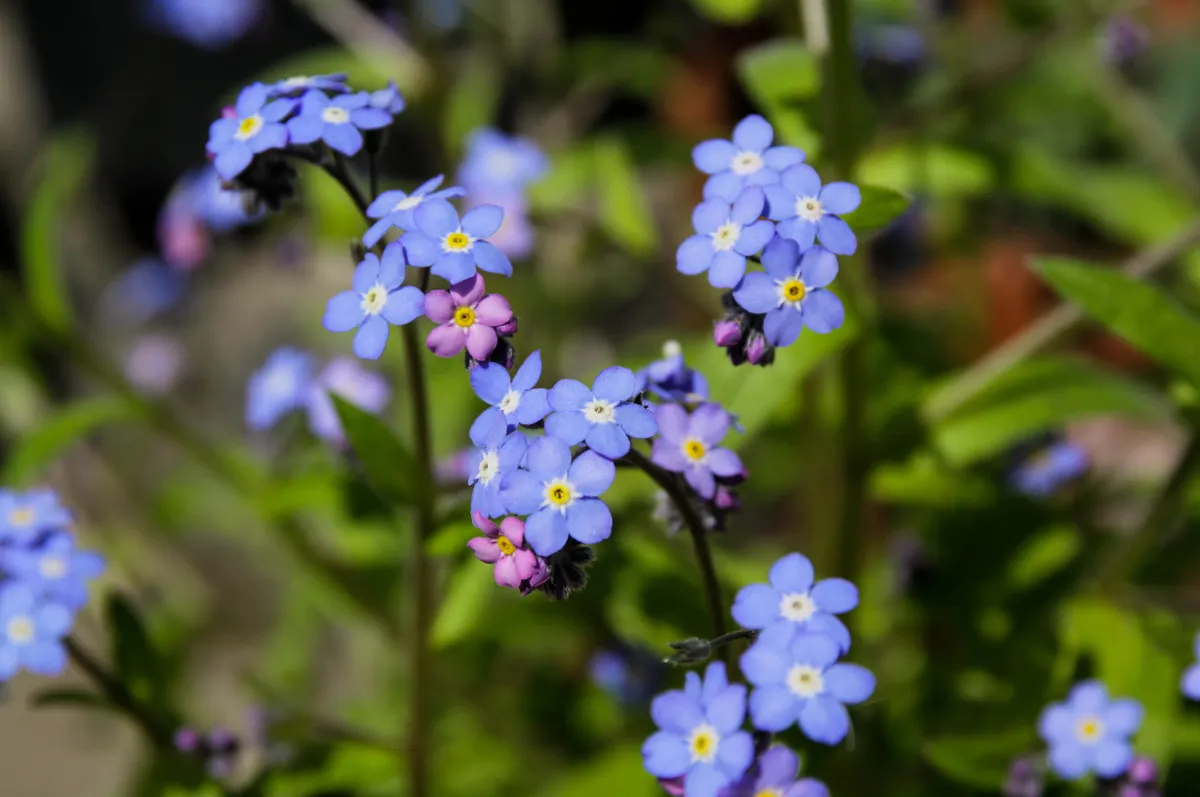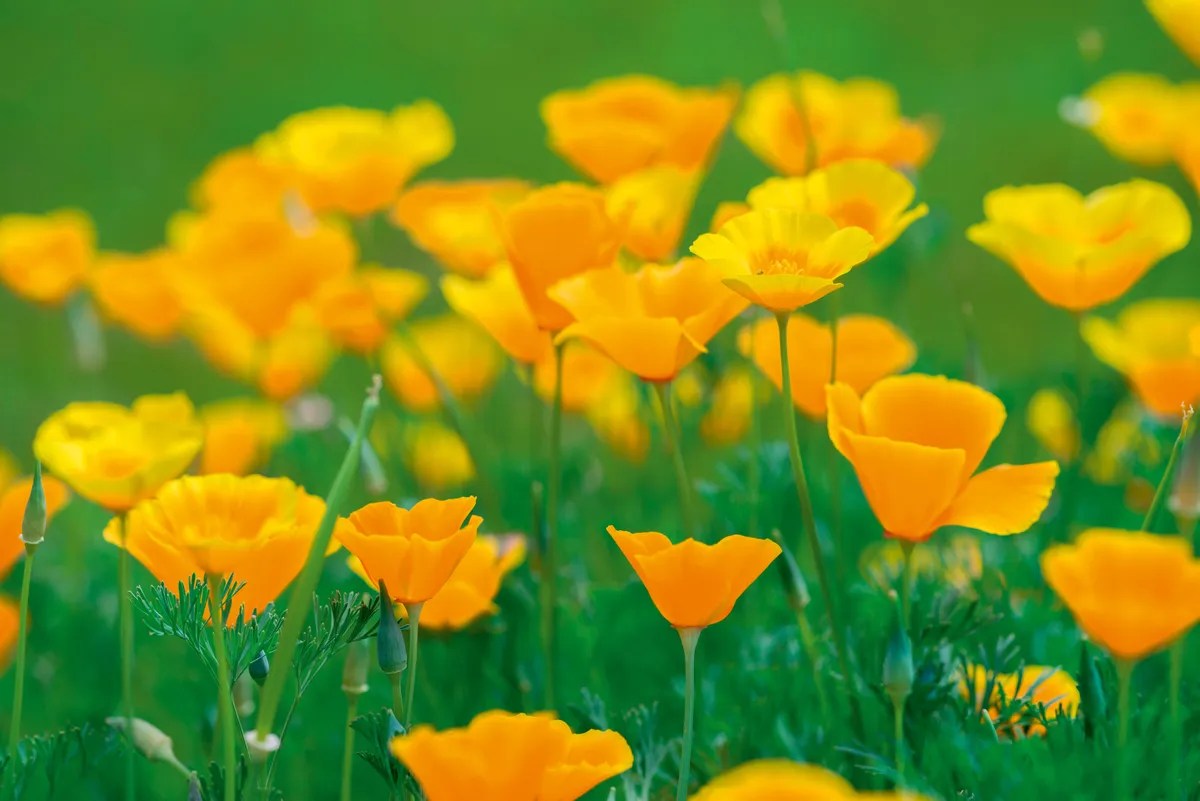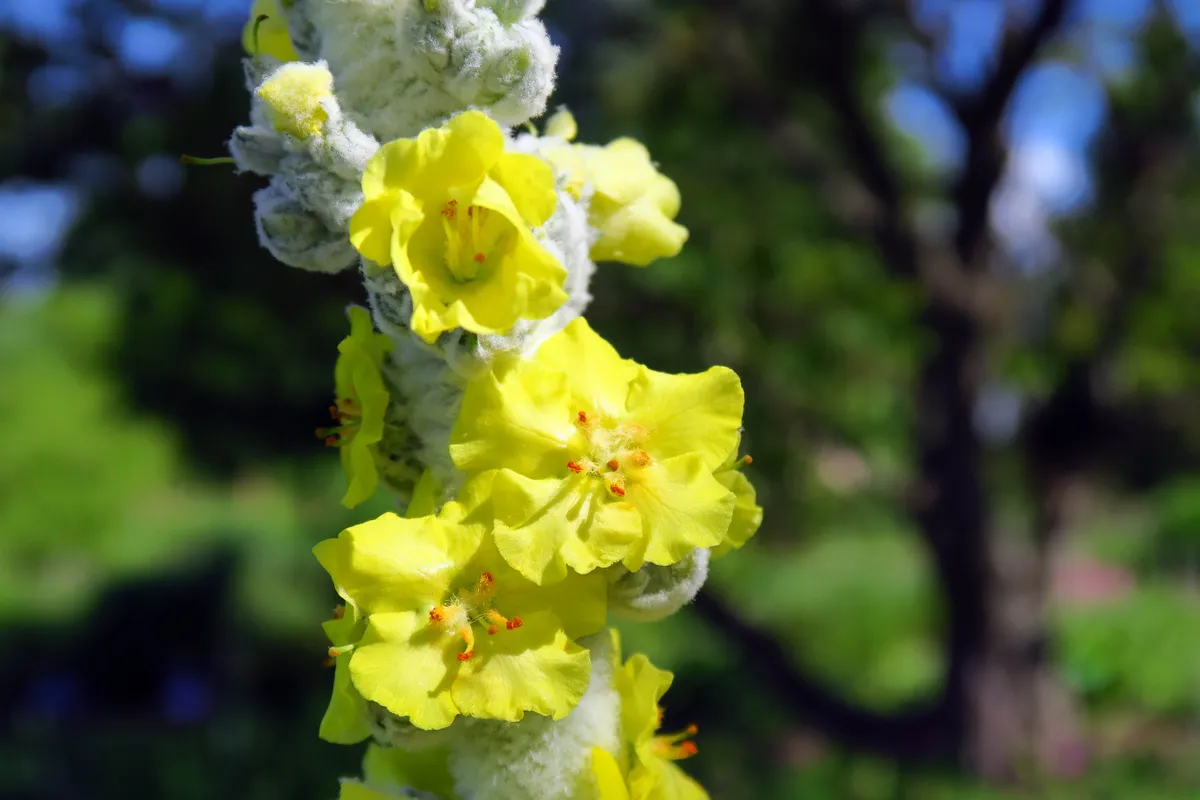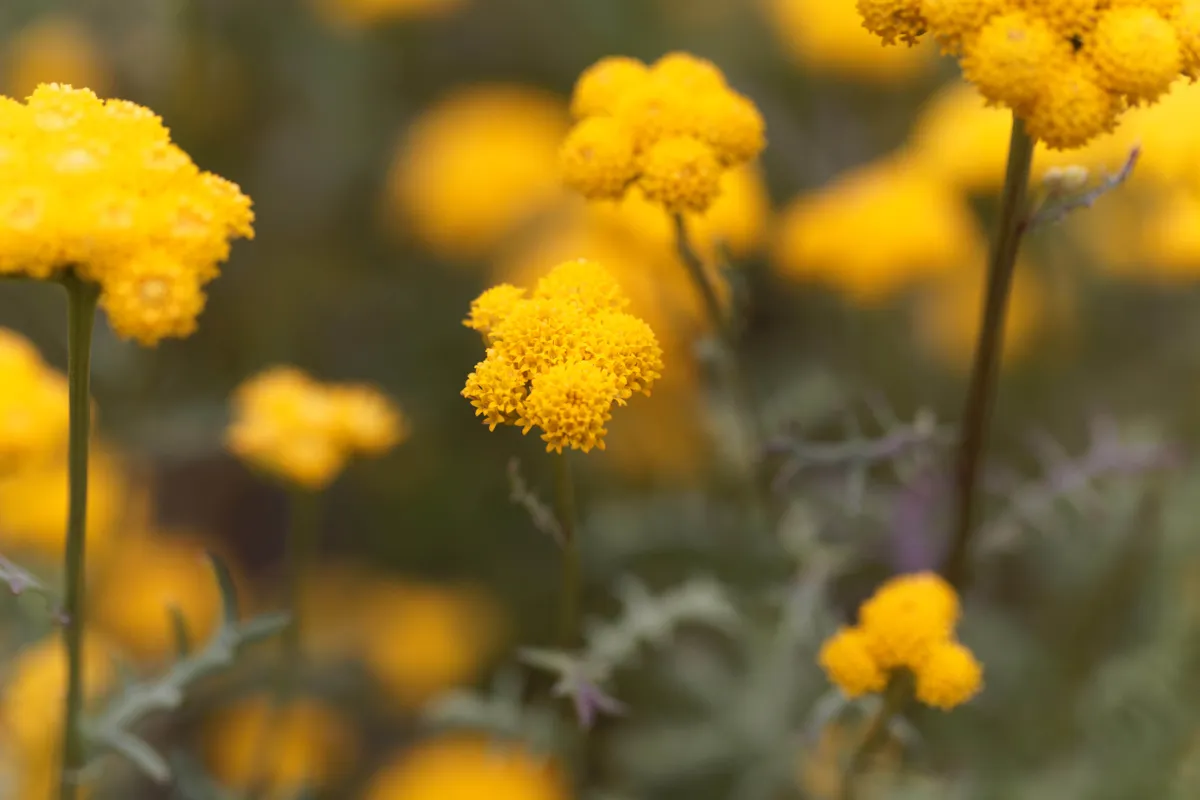Sowing seeds is a cheap and pleasurable way to enjoy an abundance of flowers in your garden. Seed sowing can be daunting, but there is a wide range of beautiful flowers that are completely fuss-free when sown from seed – simply sow the seeds in situ, directly where you would like them to flower.
You may also like
- Sow a border from scratch
- Everything you need to know about planting seeds
- How to grow a sustainable garden
- Why we should all be planting wildflowers in the garden
Sowing in situ, or direct sowing, is the low maintenance way of gardening – you don't need a propagator or a greenhouse, and don't need to to transplant seedlings from seed trays and pots, or harden them off, gradually adapting them to outside temperatures.
Direct sowing is also the most sustainable option for growing most annual flowering plants, avoiding using too much compost, seed trays and other seed sowing kit.
Some seeds, however, do better when started off under cover. Tomatoes and chillies, for example, have a long growing season and need to be sown early in the year. As temperatures can still be low in early spring, these seeds are best sown with the help of a heated propagator.
When to sow seeds outdoors
The best time to sow seeds direct into the soil and your flower beds is when the soil has warmed up and there are fewer frosts about. Late April, early May is the perfect time to sow direct.
To sow seeds direct, simply scatter the seeds on prepared soil (raked to a fine tilth beforehand), or on the top of a large container filled with compost. Check the sowing instructions on the packet for depths and spacing.
Planting seeds: everything you need to know about sowing seeds
Here, three experts, Arthur Parkinson gardener and writer; Stefano Marinaz, garden designer and Charlie Ryrie, flower grower and florist, recommend their favourite flowers for growing direct.
Perfect seeds to direct sow outdoors
Forget-me-not, Myosotis sylvatica

A self-seeding biennial but it is therefore a helpful weed suppressant; the more, the merrier for flower beds that are to be planted with tulip bulbs. I like that once they are over, it’s a job of seconds to just pull the old plants out. I especially like Mysotis sylvatica 'Blue Sylva'. 20cm x 20xm. AGM*. RHS H6, USDA 3a-8b†. Recommended by Arthur Parkinson
Read more about forget-me-not flowers
Viper's bugloss, Echium vulgare

Starts out its biennial life as a hairy, green, star-fish seedling that can appear from the tiniest of patio cracks. The following year, beginning in late June usually, come the towers of flowers of royal blue set alive by neon, electric-light-like stamens and anthers of pink. 75cm x 50cm. RHS H7, USDA 4a-8b. Recommended by Arthur Parkinson
Toadflax, Linaria maroccana Little Sweeties mixture
Germinates like mustard and cress so sow lightly by the pinch. The flowers are like miniature snapdragons, and thrive on little attention, so are ideal seeds to gift to children for them to try. 45cm x 30cm. RHS H5, USDA 4a-9b. Recommended by Arthur Parkinson
Corsican hellebore, Helleborus argutifolius

A must-have, late-winter plant with lime-cordial-toned flowers. Does well in places many plants would not cope – in dry and dappled shade among equally thuggish cottage garden perennials, and directly under trees. 50cm x 90cm. AGM. RHS H5, USDA 6a-8b.5. Recommended by Arthur Parkinson
Read our guide to growing hellebores
Fennel, Foeniculum vulgare

I’d be happy to reach old age and have an entire garden all a-fizz with fennel. For a more cultivated charm, Foeniculum vulgare ‘Purpureum’ with its brown ostrich- like foliage is a favourite froth of welcome clumping in my garden. 1.8m x 45cm.RHS H5, USDA 4a-9b. Recommended by Arthur Parkinson
Oregano, Origanum vulgare

A tapestry of pink and purple alive with butterflies. If you have a light loamy soil, it will develop good, carpet-like clumps and the goldfinches will delight in the seedheads over the winter. 90cm x 60cm. RHS H6, USDA 4a-8b. Recommended by Arthur Parkinson
African daisy, Arctotis x hybrida ‘Orange Prince’

Arctotis x hybrida 'Orange Prince' is a a real Jaffa Cake-orange, muppet of a flower. Like many of South Africa’s sun-worshipping annuals, it is very sun sensitive, opening and closing as the rays come and go. 60cm x 30cm. USDA 9a-11. Recommended by Arthur Parkinson
Honesty, Lunaria annua ‘Chedglow’

A biennial plant for full shade to partial shade with spectacular purple leaves. After flowering, the stems start desiccating and it is beautiful to see the skeleton of the flowering stem still standing in the middle of winter. It does self- seed easily but not aggressively. 1m x 30cm. RHS H6, USDA 5a-9b. Recommended by Stefano Marinaz
California poppy, Eschscholzia californica

A beautiful annual for sunny and well-drained gardens. It will self-seed freely without being invasive and the foliage will blend well among grasses and perennials. 30cm x 15cm. RHS H3, USDA 6a-10b. Recommended by Stefano Marinaz
Here's the perfect poppies for your garden
Love-in-a-mist, Nigella papillosa ‘African Bride’
One of our favourite annuals to spread in the garden in late summer or very early spring. The desiccated plants and seed pods will most likely stand throughout winter. Great as cut flowers when fresh but also great when dried. 60cm x 30cm. RHS H3. Recommended by Stefano Marinaz
Labrador violet,Viola labradorica

A great gap filler with purple flowers. Its dark leaves contrast with the lush green of surrounding ornamental grasses and perennials. 15cm x 20cm. RHS H7, USDA 3a-8b. Recommended by Stefano Marinaz
Honeywort, Cerinthe major ‘Purpurascens’

A fast-growing hardy annual that bulks up quite quickly in spring and its dark flowers provide an interesting display against lush green grasses such as Melica uniflora f. albida or Sesleria autumnalis. If the plant spreads too much, simply remove some of the lower stems and use them as cut flowers. 60cm x 60cm. RHS H3. Recommended by Stefano Marinaz
Panicum ‘Frosted Explosion’
An annual grass I got from Derry Watkins at Special Plants. It flowers all summer and its hairy appearance allows interesting intermingling of perennials such as Echinacea purpurea and Eryngium planum ‘Blue Hobbit’. Great as cut flowers. 40cm x 30cm. RHS H3. Recommended by Stefano Marinaz
Mullein, Verbascum bombyciferum

An architectural biennial, with large, silver leaves and tall flower spikes, which is great for full sun and establishes well after scattering the seeds either in autumn or early spring. The lateral stems make useful 7 cut flowers. 1.8m x 60cm. RHS H6. Recommended by Stefano Marinaz
Corncockle, Agrostemma githago ‘Ocean Pearl’

Tall, elegant, utterly beautiful, slightly ethereal, and lasting well in a vase – possibly my favourite midsummer annual. As happy in light shade as full sun. Surface sow the seeds. 60cm x 30cm. RHS H5.
Bishop's weed, Ammi visnaga

Sow in April for a late-summer display. Strong branching stems with dark-green filigree foliage carry generous platters of creamy-green flowers. Impressive seedheads curl in on themselves for late-season arrangements. 90cm x 40cm. RHS H6.
Pinkfairies, Clarkia pulchella

A wonderfully reliable addition to any cut-flower patch. Quick to germinate in an open spot, it tolerates heat and comparative drought. 30cm.
Flowering flax, Linum grandiflorum

Thin, wiry stems support delicate saucer-shaped, rose-pink flowers. Although they prefer to be sown in a sunny spot, with seeds scarcely covered, they seem to germinate happily even with competition. 45cm x 20cm. AGM. RHS H4.
Athanasia, Lonas annua

Offering deep-yellow, button heads on strong wiry stems, this is drought tolerant once established and provides long-lasting colour in troughs or beds. Sow seed sparsely or thin well to encourage a good branching habit. 45cm. USDA 3a-9b.
Night-scented stock, Matthiola longipetala subsp. bicornis

Night-scented stocks release an incredibly sweet, evening perfume, so sow in a sunny spot near a door or window. Deadhead conscientiously or sow several times from April to June for a continued summer show. 40cm x 20cm. RHS H5.
Field poppy, Papaver rhoeas

Combine traditional scarlet field poppies with deepest pinks and reds of ‘Pandora’ or paler ‘Angels Choir Mixed’, with ruffles and picotee edges. Scatter onto open, sunny ground in April to enjoy first blooms in about ten weeks. 60cm x 10cm. RHS H7, USDA 3a-10b.
Looking for inspiring purple flowers?